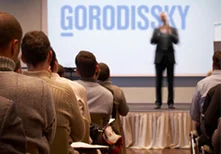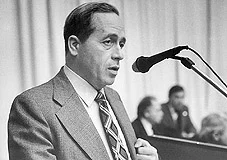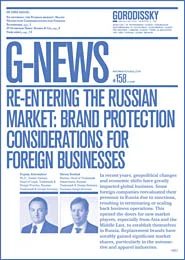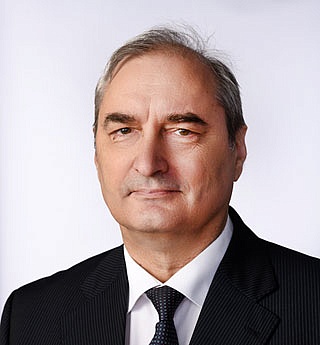Key features of utility model protection
24 February 2016The utility model protection system was originally designed to allow an inventor to protect small improvements to devices quickly. However, the system turned out to be a major market instrument used not only by true innovators, but also by patent trolls and competitors in an unfair manner. Recent changes to the relevant Russian legislation have created strong barriers to unfair use of the system, but at the cost of reducing its attractiveness.
Subject matter
In Russia, only a device may be protected as a utility model. Moreover, due to recent changes in the practice of the Patent and Trademark Office (PTO), not all devices can be protected. Only devices which are either a single unit or consist of several units mechanically connected by assembly operations and have functional-constructive unity (ie, an assembled unit that does not have separated parts) are elgible for protection.
Requirements for application
The requirements for drafting utility model applications are very similar to those for invention applications. The peculiarity of the system is that a utility model application may relate to only a single utility model, while an invention application may concern a group of inventions meeting the unity of invention requirement. Utility model claims may consist of the only independent claim, and cannot contain alternative features.
A Patent Cooperation Treaty application may enter the Russian national phase as a utility model application. A utility model application and an application for invention for the same subject matter may be filed simultaneously. After issuing a patent for one of them (usually the utility model), the patent for the other may be issued only in case of disclaimer of the latter in the part coinciding with the former. Alternatively, an applicant may change the scope of the later application to avoid double patenting, thus allowing two patents to coexist.
Conversion
Under certain circumstances it is possible to convert an invention application into a utility model application. This usually makes sense if an invention application does not appear to meet the inventive level criterion. Further, a utility model application can be converted into an invention application if, for example, the utility model application contains subject matter which cannot be protected as a utility model (eg, method or substance), or a group of subject matter is disclosed.
Amendments
The Civil Code modifications of October 1 2014 substantially limited the opportunities to insert amendments into a utility model application. Amendments are now possible only at the examiner’s request. Moreover, amendments are acceptable only if they do not change the essence of the utility model – that is:
- no 'new matter' features can be inserted;
- the pending independent claim cannot be supplemented with or replaced by another independent claim; and
- no description or mention of a new technical result which does not relate to the first disclosed technical result is possible.
Examination
A utility model application filed after October 1 2014 is subject to both formal examination (in which the PTO checks that the formal requirements have been fulfilled) and examination on the merits (where the protectability and patentability of the utility model is examined). Examinations on the merits were not carried out for utility model applications filed before October 1 2014.
In contrast to invention applications, where examination on the merits starts only after filing an examination request, examination on the merits for utility model applications begins automatically once the formal examination is complete.
As a rule, a term of prosecution for a utility model application is one year – shorter than the 18 month to two year validity period of an invention application.
The official fee for a utility model application is substantially lower than that for an invention application, because the official utility model fee has not yet been amended following the introduction of examination on merits. Once the official utility model fee has been increased, which is unavoidable, it will be comparable to the fee for an invention application.
Patentability conditions
In some countries patentable utility model subject matter should not only be industrially applicable and novel, but should also have a level of invention, although this is lower than that applicable to patentable inventions. In Russia, only industrial applicability and novelty criteria apply to utility models. As a result, only the essential features of a utility model are considered when assessing novelty.
According to Russian patent practice, an 'essential feature' is a feature which, in combination with the remaining essential features, ensures that the technical result will be achieved according to the utility model; without the essential feature the technical result cannot be achieved. Non-essential features included in claims are not considered when assessing novelty.
Prior art
Since October 1 2014 an absolute world novelty criterion has applied to utility models in Russia. This means that any information worldwide (including public use of the corresponding device) which became publicly available before the utility model's priority date prevents novelty. The prior art also includes applications for inventions, utility models or industrial designs filed with the Russian PTO by other applicants before the utility model's priority date.
Similar to inventions a six-month grace period is set out for filing a utility model application after public disclosure thereof by the applicant, the inventor or a third party which obtained information about the utility model directly or indirectly from the applicant or the inventor.
Term and scope of protection
The validity term of a utility model patent is 10 years from the filing date (if the corresponding maintenance fees are paid). The maintenance fees are due from the first year, in contrast to invention patents, where fees are paid from the third year. No extension of the validity term for a utility model is stipulated.
The exclusive rights in a utility model are practically identical to those for an invention patent. The only difference is that contrary to an invention patent, the doctrine of equivalents is not applicable when construing utility model claims in determining infringement, so only literal use is considered to be infringement of a utility model.
Invalidation
A utility model may be invalidated within the term of its validity or even after it expires if:
- the utility model does not meet the patentability criteria (ie, industrial applicability or novelty);
- it does not contain adequate written disclosure of a utility model, allowing an expert skilled in the field to carry it out;
- the claims contain 'a new matter' feature which was not disclosed in the originally filed application materials; and
- a patent is issued in the name of an unentitled person.
In the course of invalidating an invention patent for a lack of patentability, the patent owner may file a petition for conversion of the invention patent to a utility model if it meets the utility model patentability criteria. If the petition is approved, the former patent is considered to be invalid and a new utility model is issued for the remainder of the 10-year firm.
A utility model may be invalidated in full or in part.
Comment
There is no harmonised, global utility model system. The peculiarities of the Russian utility model protection system, along with recent developments in the law and practice of the courts and the PTO, means that utility model protection is attractive only if the applicant wishes to protect quickly a device subject matter with broadly drafted claims which does not meet the inventive level criterion. In any other circumstances, it makes more sense to file an invention patent.
Russian PTO data on filed applications and issued patents shows that utility model applications and patents make up only one-third of all invention applications and patents. The figures are much lower if only foreign applicants and owners are considered: 6% of applications and 7.5% of patents are for utility models. This can be explained only by peculiarities of the Russian utility model protection system.
To access this website, we request that you read and accept the Terms of Use.











